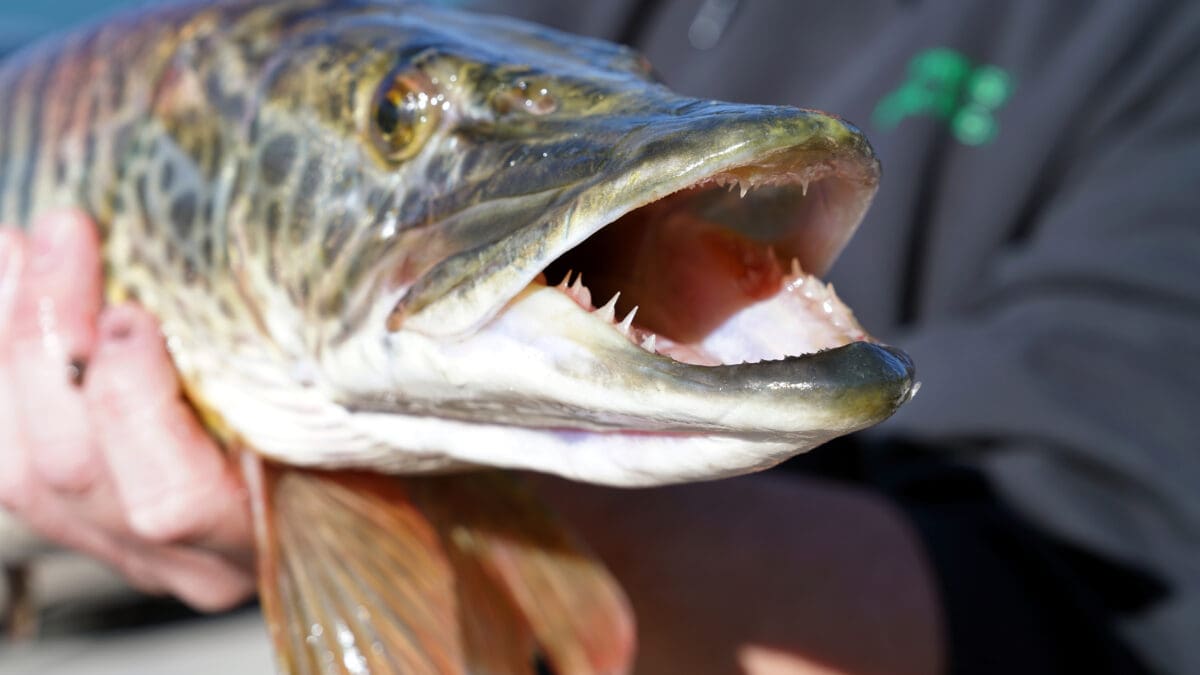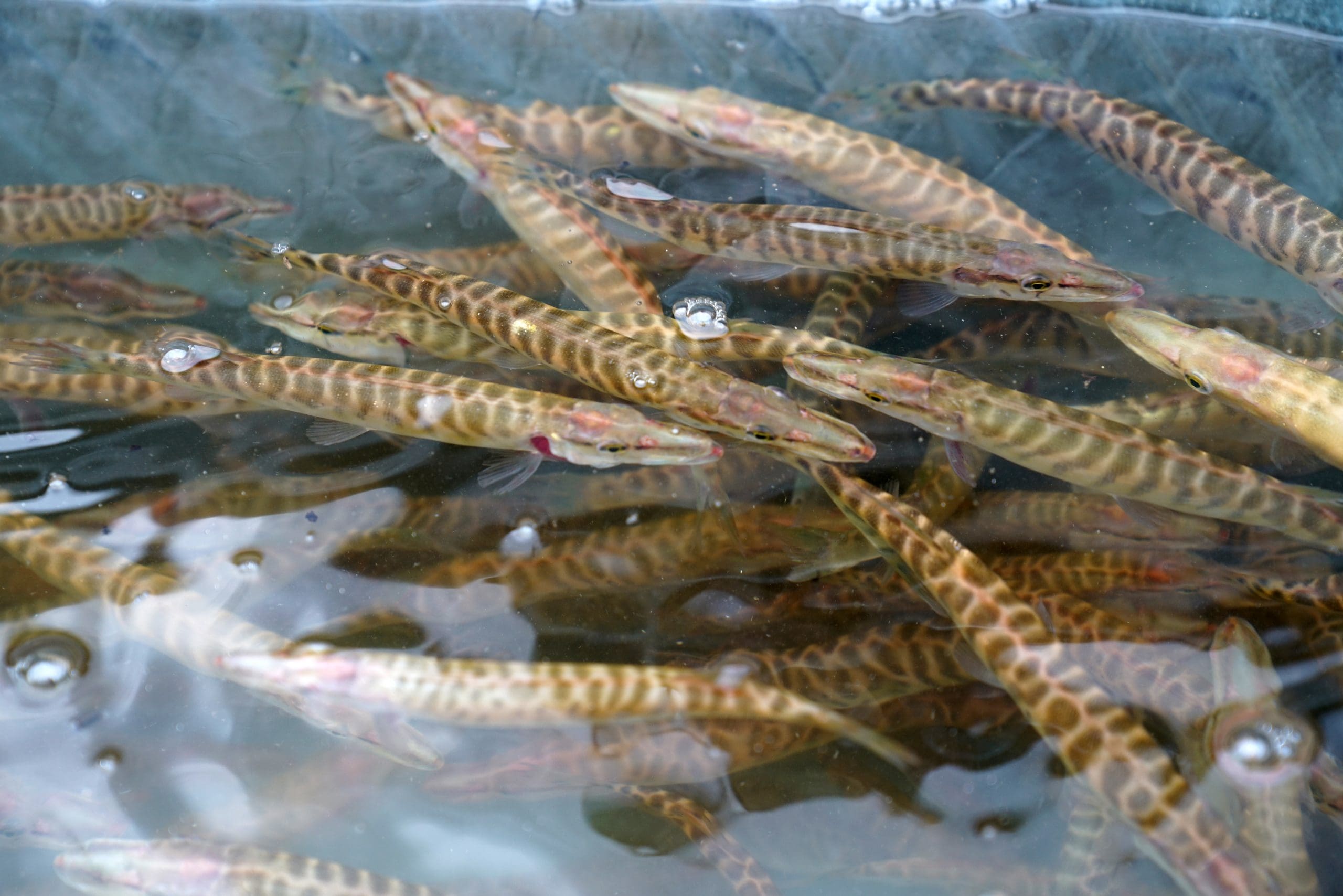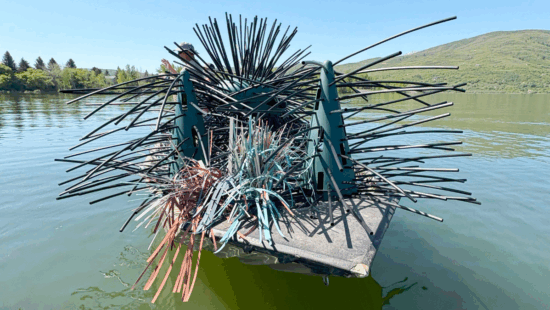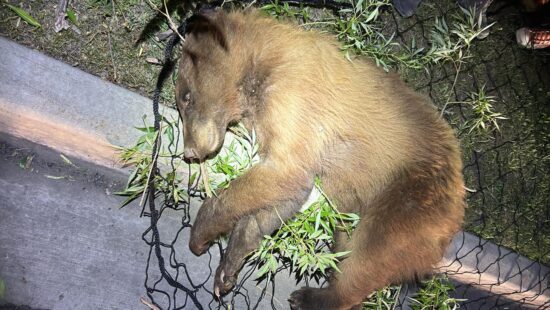Wildlife
Angler alert: DWR achieves successful tiger muskie hatching and rearing with innovative approach

Photo: Tiger Muskie. Photo Courtesy of the Utah DWR
Since 2021, DWR has raised and stocked over 85,000 tiger muskies
SALT LAKE CITY – The Utah Division of Wildlife Resources fish hatcheries have had limited success in breeding and raising tiger muskies in the past when utilizing the conventional method of trying to gather eggs from captive female northern pike for the purpose of breeding and nurturing.
DWR biologists opted to experiment with an innovative method, and after two years of testing, it has proven successful, enabling Utah to now cultivate its own tiger muskies.
Hatchery managers usually breed tiger muskies by utilizing eggs from female northern pike and milt (sperm, from male muskellunge). Despite attempts, fisheries managers faced challenges in getting female northern pike in hatcheries to yield viable eggs for the propagation of new tiger muskies.
In the spring of 2021, biologists opted for an alternative approach, endeavoring to extract eggs from a female muskellunge and pair them with milt from a male northern pike.
Hatchery managers acquired a group of female muskellunge from Lee Kay Fish Hatchery and were able to extract eggs from them with success. These eggs were then combined with milt from male northern pike caught in Recapture Reservoir and transported to Lee Kay Fish Hatchery, where they were used as part of the brood stock for this initiative.
Since 2021, the DWR has achieved a remarkable outcome by producing, raising, and stocking over 85,000 tiger muskies through the innovative crossbreeding method using female muskellunge.
In contrast to the previous practice of receiving donated tiger muskies from other states, all of these fish were hatched and raised within the state at Fountain Green Hatchery.
“Using a captive brood of fish is the most effective and efficient way to produce the numbers and sizes of tiger muskies needed to meet our management needs,” DWR Aquatics Section Assistant Chief Craig Walker said. “Because the northern pike females held at our Lee Kay Fish Hatchery have yet to produce viable eggs for spawning, the female muskellunge cross was the only logical captive brood production option for us to use.”
“However, previous observations suggested that tiger muskies produced using the muskellunge female cross could not be raised in captivity, due to an increase in cannibalism for the young fish in the hatchery tanks. Testing that this anecdotal idea was more myth than fact was a critical first step in the development of this new method.”

Tiger muskies, a hybrid fish resulting from the crossbreeding of northern pike and muskellunge, are known for their potential to reach significant sizes and their strong fighting abilities, making them a thrilling catch for anglers.
Beyond their recreational appeal, they serve as effective tools for fisheries managers in managing problematic fish populations within certain bodies of water. Utah has been introducing tiger muskies into its waters since 1988.
“This has been a very exciting milestone for our fisheries and hatchery managers involved in this effort,” Walker said. “The fact that we can now successfully raise our own tiger muskie with this new method will help us be more self-sufficient and cost effective with our tiger muskie management.”
“Next year will be the first year that the female muskellunge cross offspring will be produced using a completely captive brood in our hatcheries, which also saves time and money from not having to catch these fish each year to collect eggs and milt. And not only are we producing our own tiger muskies, but we have also seen some good survival from the ones that we raised and stocked.”
Biologists are optimistic that these hatchery-raised female northern pike will demonstrate improved egg production compared to their wild-caught counterparts.
Tiger muskie populations are thriving at several waterbodies across Utah, including the Cottonwood, Joes Valley, Newton, Pineview, Scofield, and Yuba Reservoirs.
Tiger muskies have also recently been stocked in a few high mountain lakes, including Donkey Lake in the Boulder Mountains, as well as Brown Duck Lake, Angel Lake, Dry Fork Twin and Lakeshore Lake in the Uinta Mountains.




















